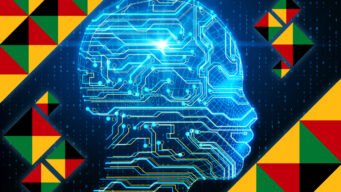What makes the Fourth Industrial Revolution (4IR) different from the Third Industrial Revolution (3IR)? Well, everything.
It is marked by exponential thinking where linear solutions no longer apply. The digital version replaces the analog version. Knowledge and invention are cumulative. Evolution is just the re-encoding of information, after all. Every person, culture, industry, and country is affected. All forms of production, management, systems, and governments will be transformed.
The opportunities are unlimited: faster prototyping and time-to-market with 3-D printing and production, conquering disease and illness with nanotechnology, micro-financing using robo-advisors and advanced algorithms, more efficient and affordable connected homes, safer and more convenient travel with autonomous vehicles. Not to mention other improvements made in human longevity, energy, material sciences, entertainment, consumerism—the list goes on and on. All of these advances will be predicated by developments made in Artificial Intelligence (AI), machine learning, algorithms, massively large data sets, and robotics.
But as the opportunities flourish, so will the perils: identity theft, cyber-crime, espionage, new definitions of conflict and war, de-humanization, a widening of the digital divide, automation anxiety, radicalization, propagandizing. Last year, my identity was stolen and I only discovered this because the Internal Revenue Service (IRS) rejected my tax return, claiming that I had already filed. Sixteen months later, I am still dealing with the aftereffects.
The 4IR is delineated from the 3IR by three main concepts: extreme connectivity, extreme computing power, and extreme automation.
Extreme Connectivity: Cell phones currently connect almost 5 billion people. By 2025, this number will be 6 billion. Today, a smartphone costs $150 USD a month. By 2025, it will cost $150 USD a year. Further, it is easy to follow the curve to attaining 1 trillion connected devices (machines) over the Internet (cars, phones, homes, machinery, airplanes, trucks, ships, soda machines, etc.). Six billion connected people, 1 trillion connected machines—this is extreme connectivity.
Extreme Computing Power: Today, you can rent almost endless processing power from Microsoft Azure or Amazon’s AWS. Enter quantum computing and the Qubit. Quantum computing will become a reality in the 4IR. Humans can no longer beat a computer at chess. The world’s Go champion is also a computer; the alpha male is replaced by Google’s AlphaGo. This is nothing compared to the capabilities of quantum computing and the Qubit. Quantum computing has already reached 128 Qubits of processing capacity for a single system. At 1024 Qubits of quantum processing power, all the world’s traditional encryption codes can be unlocked by a machine in near real time. All doors are instantly opened, from banks to vaults to personal accounts to weapons systems. It would be a world without doors and locks. This is extreme computing power.
Extreme Automation: With extreme connectivity and extreme computing power, the exponential opportunities for automation are revealed (truths are revealed, never created): cognitive, AI, machine learning, 3-D printing (prosthetics, cloths, and machine parts), algorithms, and methods at hyper-scale. Five billion Google searches a day, 200 million daily orders on Alibaba, and 2 billion worldwide Facebook subscribers. Automation will drive cars, cure cancer, replace entire labor pools, reduce underwriting risk, fight wars, and entertain us. Ultimately, it will create a new class of sentient beings with artificial consciousness. This is extreme automation.
The 4IR has the potential to disrupt in ways we have yet to realize. In my next blog, I will look at the impact it will have on business.
To read more, download The Golden Age of Innovation.
I’ll be taking this message on the road for Enterprise World. Learn more.
I’d love to hear your thoughts. To provide feedback, or if you would like to see additional topics covered in future publications, please add your comment below.




